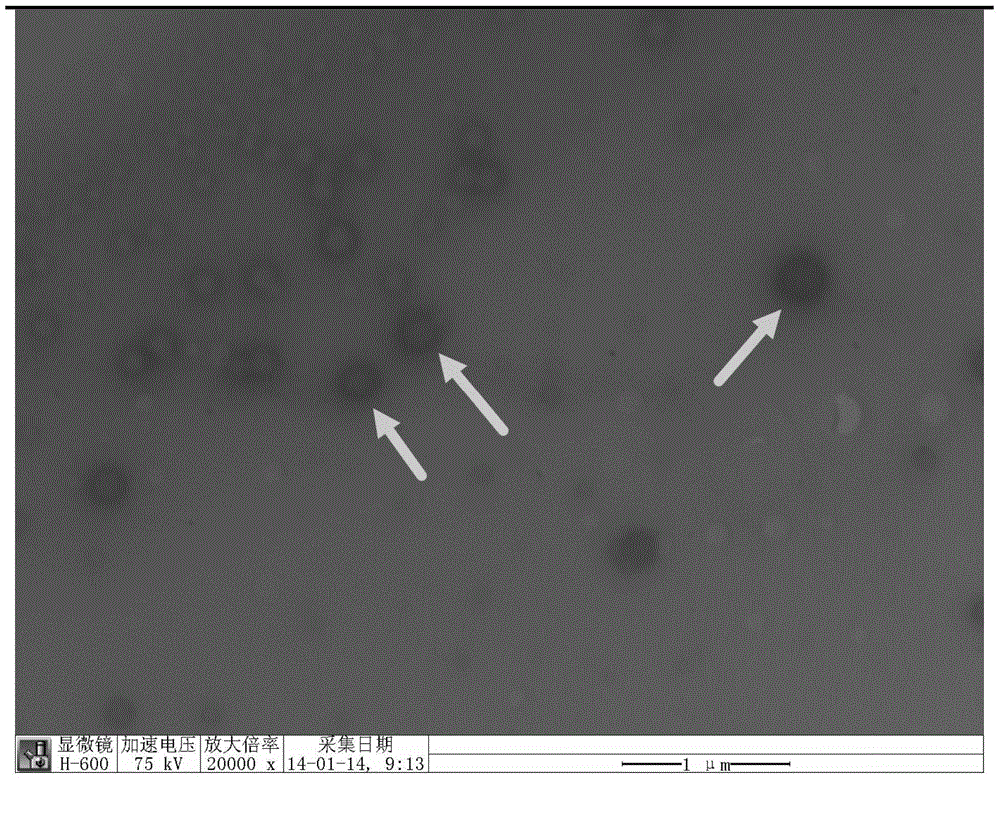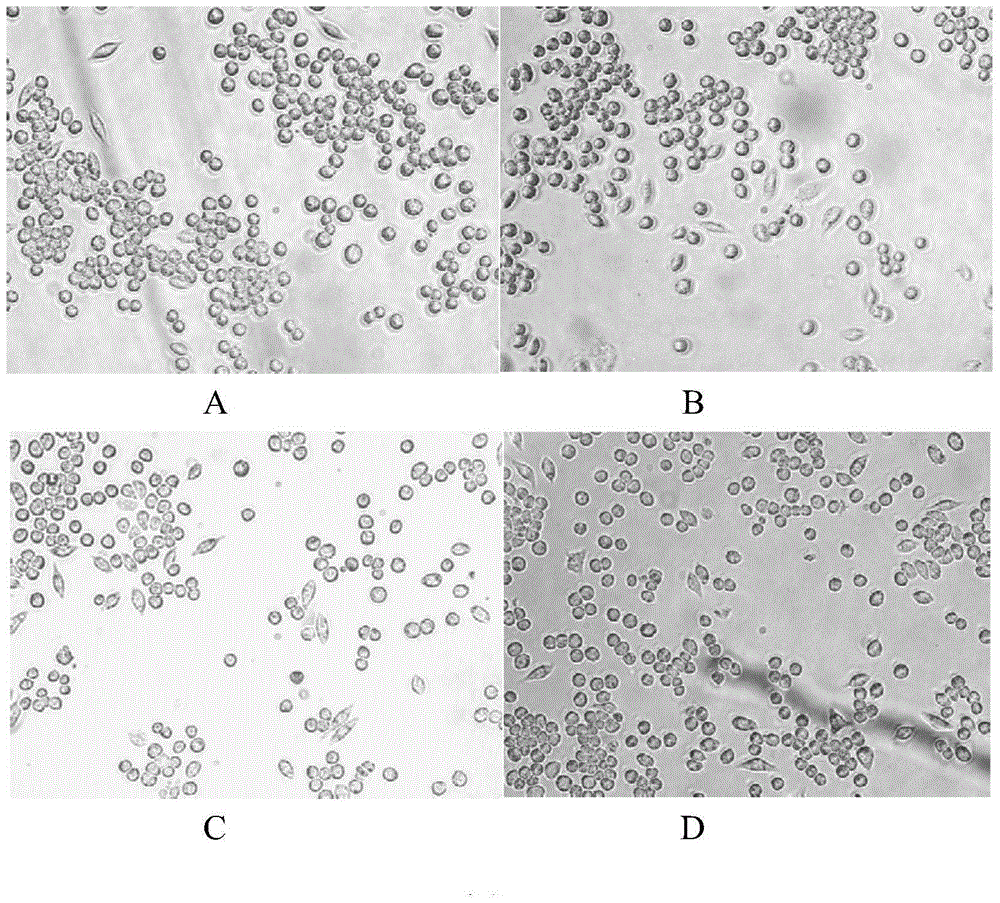Reactive-oxygen-species sensitive nanoparticle capable of promoting vascularization of surface of wound and preparation method thereof
A technology of nanoparticles and reactive oxygen species, which is applied in the field of medicine to maintain protein activity and promote vascularization of wounds
- Summary
- Abstract
- Description
- Claims
- Application Information
AI Technical Summary
Problems solved by technology
Method used
Image
Examples
Embodiment 1
[0041] Embodiment 1: Preparation of drug-loaded nanoparticles of the present invention
[0042] Such as image 3 As shown, the w1 / o / w2 method is applied, 1mg murine SDF-1α is dissolved in 100ulPBS solution as the inner water phase, 10mgPPADT is dissolved in 1ml dichloromethane as the oil phase, and the initial milk suspension. The colostrum suspension was added to 1ml of 1% sodium cholate solution (outer aqueous phase), and the double emulsion suspension was formed by continuous ultrasonication at 200 watts*30s. Then put the double emulsion suspension into 40ml of 0.5% sodium cholate solution and stir at 500rpm at 4°C for 4 hours to remove the organic solvent. Nanoparticles were collected after gradient centrifugation, resuspended in deionized water, and repeated three times to remove SDF-1α and sodium cholate in the solution to obtain SDF-1α-PPADT nanoparticles.
[0043] The number of nanoparticles measured by the particle size analyzer and the transmission electron micros...
Embodiment 2
[0044] Embodiment 2: SDF-1α-PPADT release experiment in vitro
[0045] Dissolve the nanoparticles prepared in the previous step with 1ml of dichloromethane, centrifuge at 12000g for 10 minutes, remove the supernatant, dissolve the SDF-1α attached to the wall with an appropriate amount of PBS solution, and measure its content by ELISA. When the dosage of SDF-1α is 1 mg and the dosage of PPADT is 10 mg, each 1 mg of nanoparticles contains 18ug of SDF-1α. 100 mg of SDF-1α-PPADT nanoparticles were resuspended in 1 ml of deionized water and Fenton’s reagent (3% H 2 o 2 Add 1% ferrous chloride), take an appropriate amount of suspension respectively at 30min, 1h, 3h, 6h, 12h, 24h, 48h, remove nanoparticles by centrifugation at 20000g for 10min, and measure the concentration of SDF-1α in the supernatant by ELISA. In aqueous solution, nanoparticles released 5% of the total amount of SDF-1α encapsulated within 48h. In the presence of oxygen free radicals, SDF-1α in the nanoparticles ...
Embodiment 3
[0047] Embodiment 3: PPADT cytotoxicity experiment
[0048] The low-glucose DMEM cell culture with 10% fetal bovine serum is based on culturing RAW264.7 in a 6-well plate, and the cell density is 1X10 5 / well, add deionized water, 1mg / ml blank nanoparticles, 10mg / ml blank nanoparticles, 100mg / ml blank nanoparticles to culture for 24 hours, 6 wells in each group, stain with CCK8 after 24 hours, under 200X microscope Observe 10 fields of view, count the number of surviving cells, and count the absorbance value at 570nm, and compare the cell proliferation rates of each group. It is found that after 24 hours of co-culture with PPADT nanoparticles and RAW264.7 cells, the cell proliferation rate is basically the same as that of the control group. similar (Table 1, figure 2 ). Prove that the cytotoxicity of nanoparticles is weak.
[0049] Table 1: Cell Viability Detection
[0050] (cytotoxicity test co-cultured for 24 hours CCK8 staining, relative absorbance value)
[0051] ...
PUM
| Property | Measurement | Unit |
|---|---|---|
| Particle size | aaaaa | aaaaa |
Abstract
Description
Claims
Application Information
 Login to View More
Login to View More - R&D
- Intellectual Property
- Life Sciences
- Materials
- Tech Scout
- Unparalleled Data Quality
- Higher Quality Content
- 60% Fewer Hallucinations
Browse by: Latest US Patents, China's latest patents, Technical Efficacy Thesaurus, Application Domain, Technology Topic, Popular Technical Reports.
© 2025 PatSnap. All rights reserved.Legal|Privacy policy|Modern Slavery Act Transparency Statement|Sitemap|About US| Contact US: help@patsnap.com



